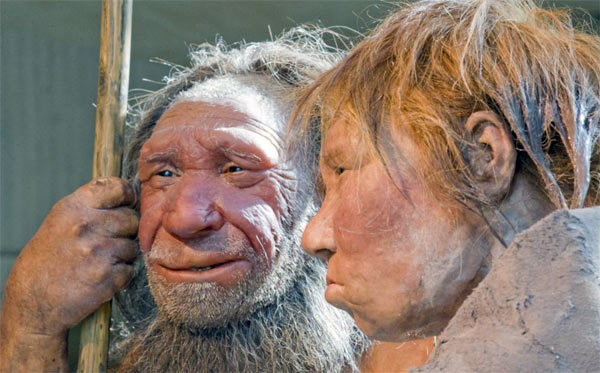Neanderthals faced extinction before humans appeared, but recovered
Anew study of mitochondrial DNA sequences published in the journal Molecular Biology and Evolution has found that Neanderthals came close to extinction during the last Ice Age in Western Europe, possible before they came into contact with Homo sapiens, but then managed to recover from the population crisis.
Until now, it was widely believed that Europe had been populated by a relatively stable Neanderthal population for hundreds of thousands of years, but this research shows that the Neanderthals had a tougher time that previously thought. Nevertheless, they showed their resilience by fighting their way back from near extinction, allowing them to come into contact with Homo sapiens and interbreed with them. Recent research showed that nearly 20% of Neanderthal genes are represented in Homo sapiens today.
The fact that Neanderthals in Western Europe were nearly extinct, but then recovered long before they came into contact with modern humans came as a complete surprise to us," said study co-author Love Dalén, associate professor at the Swedish Museum of Natural History in Stockholm. "This indicates that the Neanderthals may have been more sensitive to the dramatic climate changes that took place in the last Ice Age than was previously thought.
The international team of researchers, led by Anders Götherström at Uppsala University and Love Dalén at the Swedish Museum of Natural History, analysed the amount of genetic variation in the DNA from 13 Neanderthals and from there, the scientists pieced together the puzzle of a demographic history. When they started looking at the DNA, a clear pattern emerged. Neanderthal individuals from Western Europe that were older than 50,000 years and individuals from sites in western Asia and the Middle East showed a high degree of genetic variation, which is what is expected from a species that has been abundant in an area for a long period of time. However, Neanderthal individuals from Western Europe that were younger than 50,000 years show an extremely reduced amount of genetic variation, less even than the present-day population of remote Iceland.
The demographic crisis coincides with a period of extreme cold in Western Europe. Co-author Rolf Quam of the University of Binghamtod suggests that the findings call for a major rethinking of the idea of cold adaptation in Neanderthals. "At the very least, this tells us that without the aid of material culture or technology, there is a limit to our biological adaptation," said Quam.
It is believed that extinction was avoided when Neanderthals from surrounding areas repopulated the region. The geographic origin of this source population is not clear, but it may be possible to pinpoint it further with additional study.
Quam concluded by saying that this study is the latest example of how studies of ancient DNA are “providing new insights into an important and previously unknown part of Neanderthal history… It’s exciting to think about what will turn up next.”




















Comments
Provided that this genetic bottleneck in Neanderthals was caused by climate deterioration, it would have put them at extra risk when meeting Homo Sapiens, coming from warmer, denser populated areas, carrying diseases.Not all diseases show up in a corpse, and epidemic deaths might go unburied, distorting statistics. There is a lot of variation in information, depending on the source and the interpretation of it , we should be wary of circular statements. It has been suggested that all mankind was reduced to a few thousand around 70.000 years ago. Personally I suspect "Out of Africa" should not be treated as the whole truth. I like very much the fact that Neanderthals now are treated with respect, and the genes we have from him have survived because they were good. Not many years ago they were regarded as dimwitted brutes, perhaps unable to speak! I call this survivor chauvinism. I have known several Neanderthal body type people: Long trunk, short limbs, very strong. Personally I have his big hands, and extreme resistance to cold.